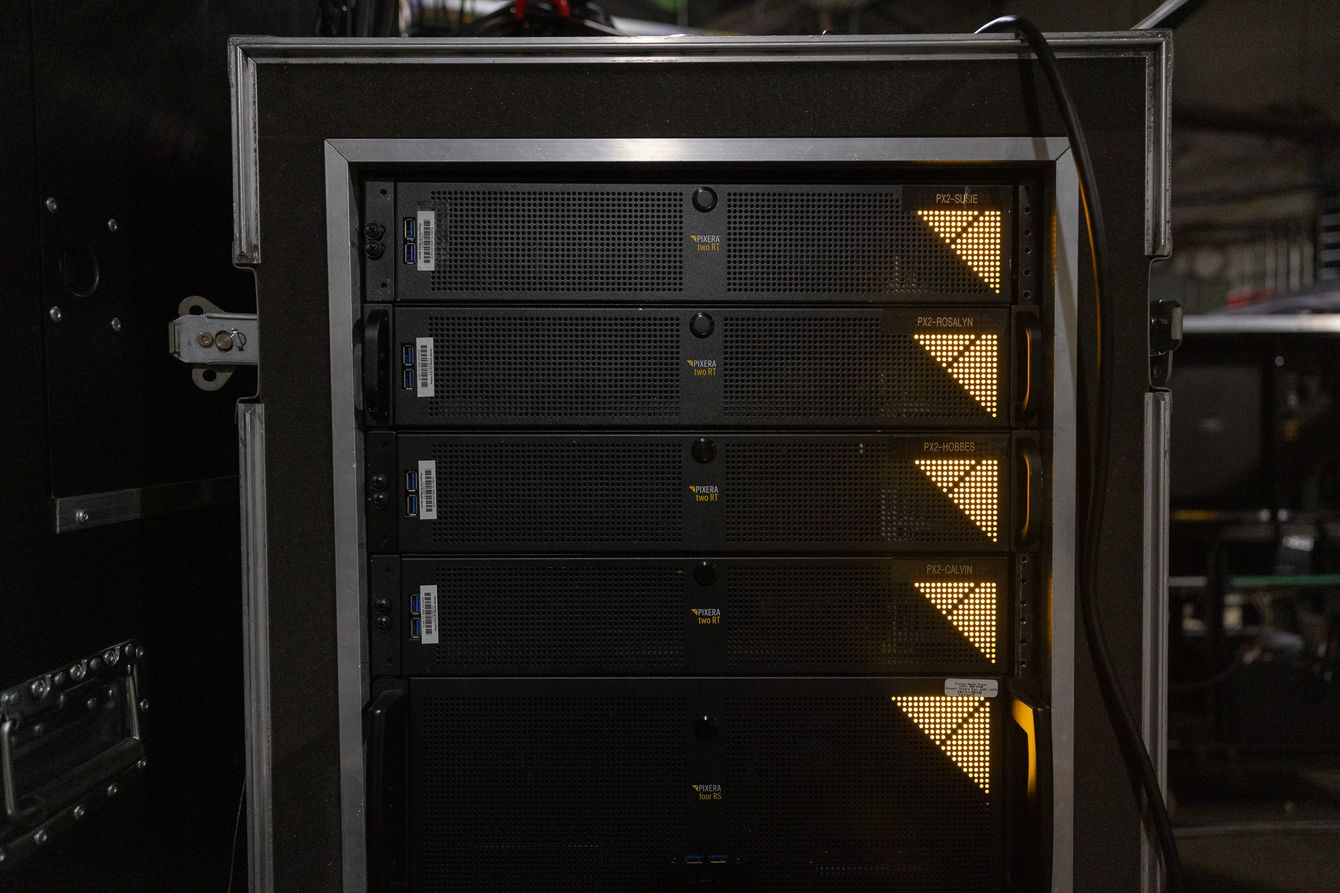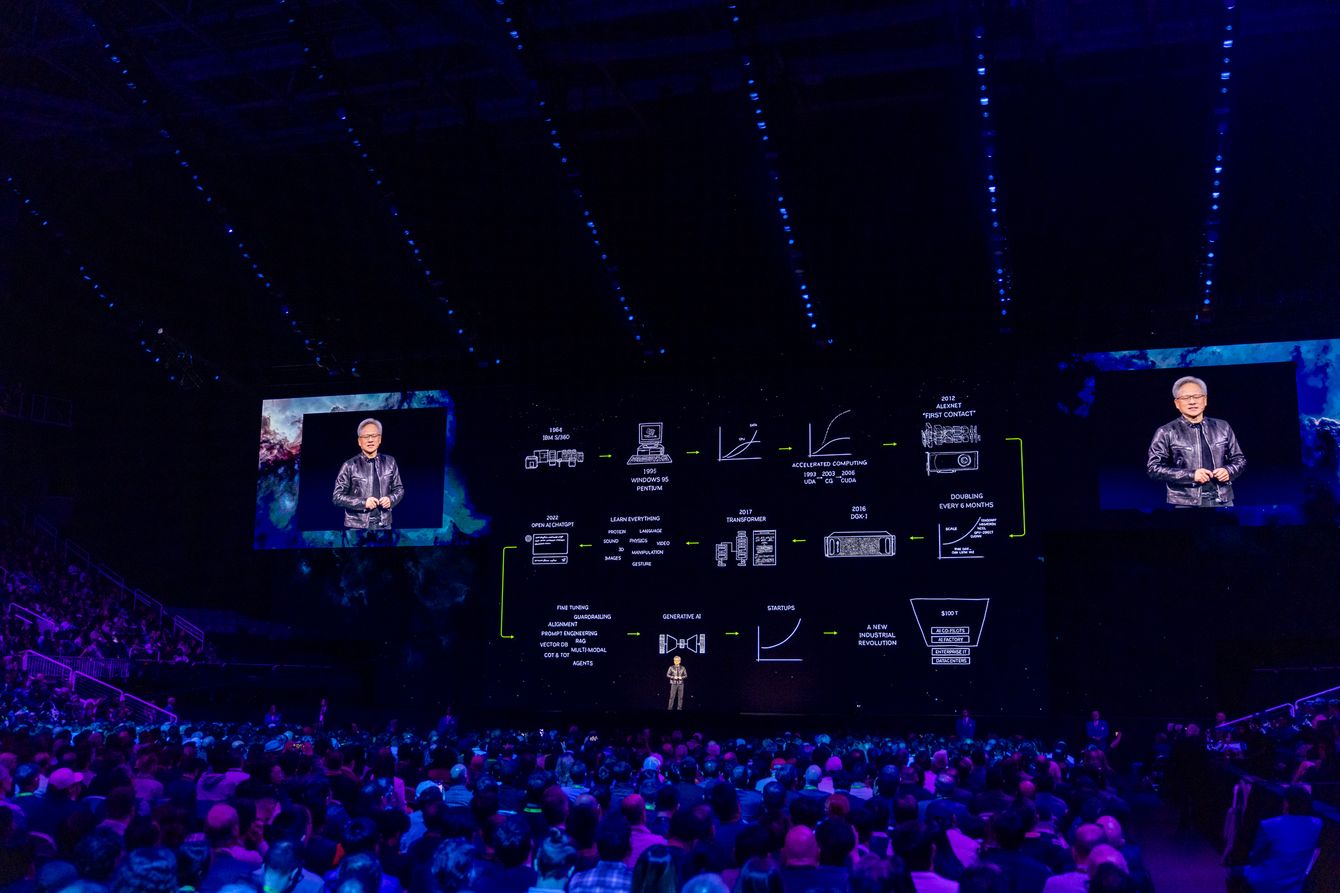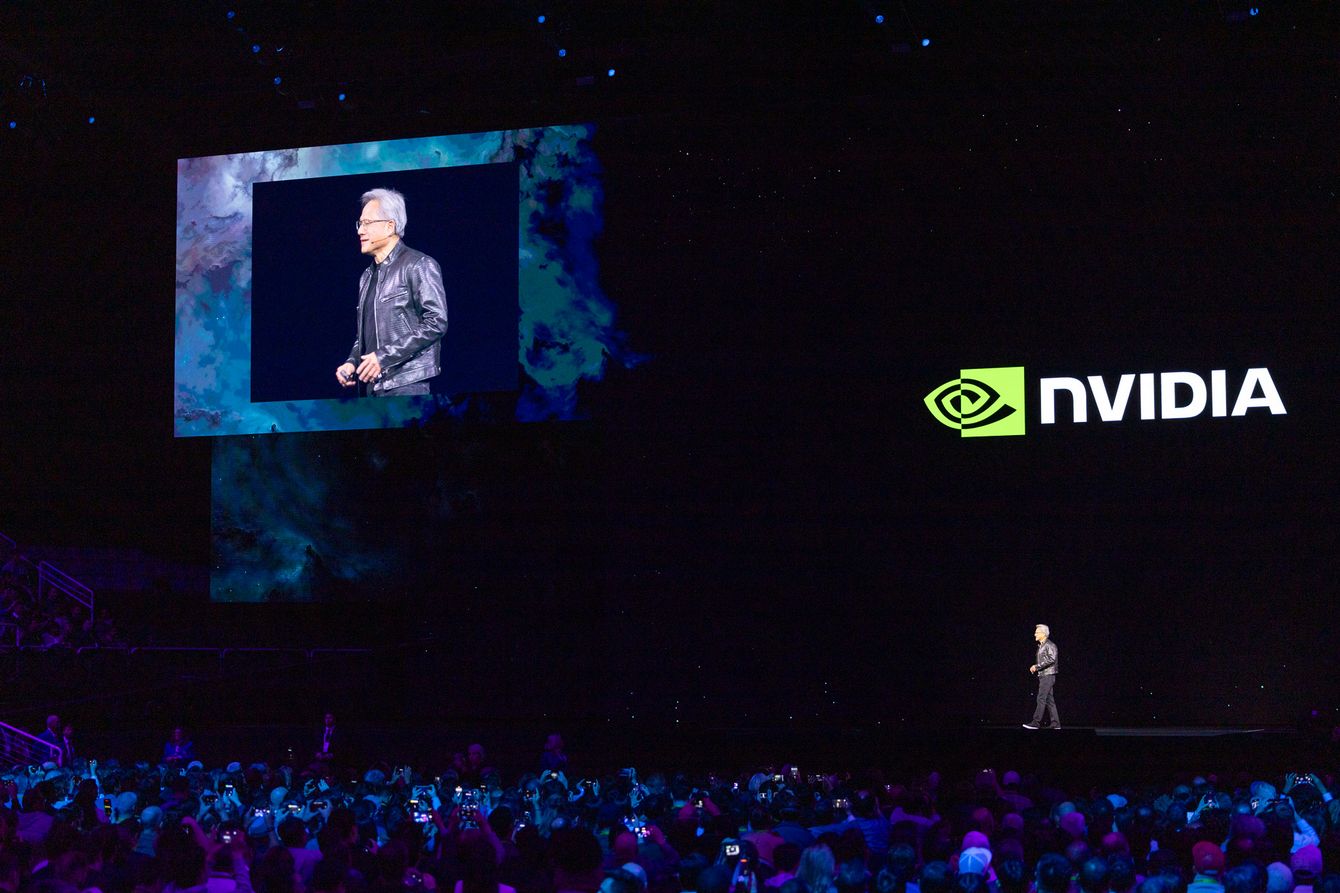Wallern a.d. Trattnach (Austria), 08.07.2023 – An AI conference that drew thousands of developers, researchers, and industry professionals to Silicon Valley to learn the latest about artificial intelligence and accelerated computing. For the event’s kickoff, more than 11,000 attendees packed the SAP Center, a San Jose sports venue, to hear NVIDIA CEO Jensen Huang’s keynote address.
With the scale, complexity, and profile of GTC increasing each year, NVIDIA wanted to continue raising the bar on delivering immersive visual experiences to its audience. The demand for high-quality graphics and seamless presentations required a robust media server solution that could integrate with NVIDIA hardware seamlessly, so the team chose AV Stumpfl’sPIXERA media server platform.
A dedicated NVIDIA team works year-round on GTC – planning the next event when not executing on the current one. Following this most successful GTC yet, Paul Camino, Audio Visual Technical Director for Events at NVIDIA, sat down to discuss the event at AV Stumpf’s new PIXERA studio in Santa Monica, California.
“GTC is our largest event for the company – it’s probably also the largest AI-centric event in the world,” Camino said. “Our keynote had 30 million [streaming] views, and we had 1,100 sessions on technical talks."
PIXERA software was tailor-made for events just like GTC, and more than met NVIDIA's exacting standards. “PIXERA's hardware is based on NVIDIA graphics architecture," said Conor McGill, Director of PIXERA USA, emphasizing the synergy between AV Stumpf’s media server and NVIDIA technology. "We are currently taking a close look at NVIDIA's RiverMax technology as it shows great promise for a possible SMPTE2110 solution in the future.”
This alignment of technologies provides NVIDIA with a powerful tool for delivering stunning visuals at GTC, as well as other events throughout the year. For GTC 2024, NVIDIA’s production company brought in racks of PIXERA servers to render pixels for the massive upstage LED wall – with over 53,000,000 pixels as well as the arena’s built-in LED ribbon – which served as both scenery and visual aid for the two-hour keynote.
External graphics were ingested live via HDMI capture cards, while video files were played back from PIXERA timelines. Camino notes that since PIXERA is also a software solution, the NVIDIA teams were able to use it in preproduction meetings on their own computers to visualize how the content would render across the LED displays before having access to the PIXERA server stack.
“We were really excited to utilize PIXERA as the main visual driver for our screens, deviating from traditional presentation switchers and video playback systems,” said Camino.
PIXERA’s native versatility and performance were on full display at GTC, where it seamlessly integrated with NVIDIA's hardware to deliver flawless presentations. Camino highlights PIXERA’s ability to handle high-quality video playback (using the NotchLC codec), ensuring smooth playback without stuttering or banding issues.
Moreover, PIXERA’s PowerPoint pipeline allowed NVIDIA to maintain a workflow that executives were familiar with for developing and editing content, but allowed production teams to achieve professional results. “PIXERA was great because we could actually use the blending mode to incorporate the video content with the scenery behind it,” Camino stated, “something that a typical presentation switcher doesn't do well.”
McGill notes that PIXERA plans to explore new frontiers in event technology with NVIDIA. With emerging standards like SMPTE 2110, there are opportunities to further enhance workflows and unlock new creative possibilities. “At AV Stumpfl, we believe ST 2110 has something to offer for everybody along the value chain, in many of PIXERA's most common applications,” said McGill, emphasizing the significance of unified standards-based approaches. “The engineers love it because it's a unified backend infrastructure that is completely network-based. The green visors love it because there's less specialized, expensive equipment. Production teams find it unlocks so many workflows because of the flexibility. When everything's unified, systems become much more economical solutions to scale.”
The success of GTC 2024 underscored the power of collaboration in driving excellence in event production. NVIDIA was able to deliver unforgettable visual experiences to its audience in the arena, and around the world, with its trusted partner AV Stumpfl.




